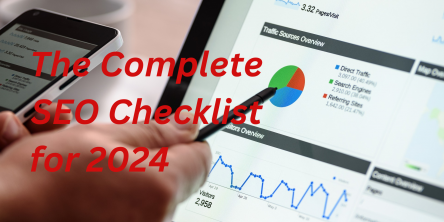The 3 Most Important SEO Tips For Newly Built Websites

After registering your domain name and starting your website for your new business idea, it is not too early to apply SEO techniques to make sure that Google discovers and ranks your page high in their results.
SEO is a long-term process. Although its results are rarely immediate, taking wise SEO steps in the initial stages of your website development can have a huge impact on your its rank in the future. The earlier it gets ranked, the sooner you start attracting traffic, leads and sales.
Get your SEO strategies right at the beginning and this will save you hours, days and weeks of fine-tuning a website that was not originally built with SEO in mind.
After establishing your new website, here are three steps that you should take to rank well for your target keywords, attract traffic and secure your business for the years to come.
1. Plan on your target keywords.
The first step to take is to structure your website for your target keywords as it has a huge effect on your website's ability to rank. To do this, you have to set each page target with its own closely related and highly relevant keywords.
Let us pretend for a minute that you are launching a website for makeup products and you sell different brands of lipsticks, powders, and eyeshadows. You need to set up the pages in a way that each category will rank for its target keyword and attract customers who are looking for specific types of makeup.
To explain further, you need to break down the structure of your website into different categories, with each one aimed at a different search keyword. For example, if your homepage target keyword is makeup, your subpages' target keyword could be eyeshadows, lipsticks, foundations, powders, highlighters, primers, brushes, serums, etc.
What are the benefits you get in structuring your website this way? First, you create a clear theme and a target keyword for each page instead of having a single page with multiple keywords. Doing this will allow you to closely monitor each page for target keywords and maximize its relevance.
Second, it allows you to further break down main categories into subcategories. In return, you can set a primary and secondary keyword for each page. A page structure with its own dedicated set of keywords increases your relevance and potentially improves organic search visibility.
2. Work on a Google-friendly content
The quality of your website content is also one area to focus on and the most important thing to think about is to make it relevant to your readers.
Data shows that pages with 1000 to 2000+ words content typically rank higher in Google search compared to pages with shorter contents. Although creating substantial articles this long will take more time, it will deliver positive effects on your site's ability to rank.
For optimal on-page SEO, make sure to include target keywords in your content, but do not overdo it as well. Google will rank down pages with keyword-stuffed articles.
If you are not too keen on writing long posts and articles, you are not necessarily required to create long posts. John Mueller of Google said that there is no minimum word count when it comes to gauging quality content.
If you want to keep your posts short and concise, you can do so just as long as you produce quality output. But you also have to consider that idea that the more texts you have, the more useful it is for ranking various long tail keywords.
After writing a lengthy but compelling article, you must now optimize your title tags for each primary keyword. This is the text that Google will display as your page title for every search result. This will also be displayed in the user's browser when they visit your page.
Make sure that you create a good title tag to accurately describe your content. Along the title tag should be the main keyword you are targeting in SEO. For example, the "The No-Makeup Makeup Look" post on your website would benefit from a title tag like this:
"The No-Makeup Makeup Look - Nude Shade Lipsticks and Where To Buy Online"
This title accurately describes what the page contains (information about natural-looking makeup) and tells the users what content to expect (a list of nude shade lipsticks and where to buy them).
One detail to remember is that Google will crop title tags with more than 60 characters, so keep your page titles as brief and simple as possible. For optimal SEO, try to use your target keywords as close to the start of the title tag.
Lastly, for creating Google-friendly content, make sure to use action-focused meta description. Although they do not rank for SEO, it is still important to give each page a relevant and keyword-focused meta descriptions. The main reason behind choosing a good meta description is increasing your clickthrough rate (CTR).
Detailed meta-descriptions are seen on the search engine results page, it is the small paragraph below each result. When you use relevant and keyword focused meta descriptions, search engines show them on the search results page and surfers are more compelled to click on your material instead of a competing website. This will raise your click-through rate.
3. Do not forget to setup Google Analytics.
As soon as you have built your website and developed great content, you can now install Google Analytics. It is a tracking software that will allow you to monitor the stats of your website - such as how people use it and how well people find it.
From an SEO perspective, Google Analytics is a great tool to spot an opportunity to further improve your website's SEO. So as soon as you launch your website, do not forget to install Google analytics. Following Google Analytics closely can boost your website traffic by giving you a better understanding of the type of traffic you are getting to your site.
After building your own website and implementing these three steps above, you are now well on your way to a successful SEO campaign. As your traffic slowly increases, make sure to include other SEO strategies (like adding external and internal links, guest posting, etc) to engage more users and keep your metrics high.
Similar Articles
The shift from traditional SEO practices to more structured enterprise SEO approaches reflects the need for businesses to manage their complex online environments efficiently. This evolution is driven by the ever-changing search engine algorithms that continuously shape websites' visibility and ranking
Today, companies require more than simply being seen; they require approaches that can generate sales in the digital world. This is where data-driven SEO techniques come in handy.
In today’s digital-first world, having a better and solid SEO strategy is vital for business growth. SEO is a cost-effective method to attract natural online traffic to your website and enhance your product visibility, sales, and business growth.
Avoid these 5 common mistakes as an SEO consultant. Learn how to navigate challenges, deliver results, and grow your consulting business successfully.
In today's digital world, businesses are always looking for ways to improve their online presence. One effective strategy is blogger outreach. But what exactly is blogger outreach, and how can it help boost your SEO? Let's break it down step by step in simple terms.
The recent disclosure of internal Google Search API papers has given the SEO community unprecedented insight into the search engine's ranking factors.
Many businesses find the intricacies of SEO daunting, yet boosting your online presence is critical for success. Full SEO services offer a comprehensive solution that optimizes every aspect of your website, ensuring improved search engine rankings and increased organic traffic
Learn top SEO strategies for driving organic traffic in 2024. Discover the latest techniques to boost your website's visibility and rankings.
The online world is constantly changing, and we wonder if SEO will still be relevant in 2024. This article will answer this question with robust facts and expert opinions.









